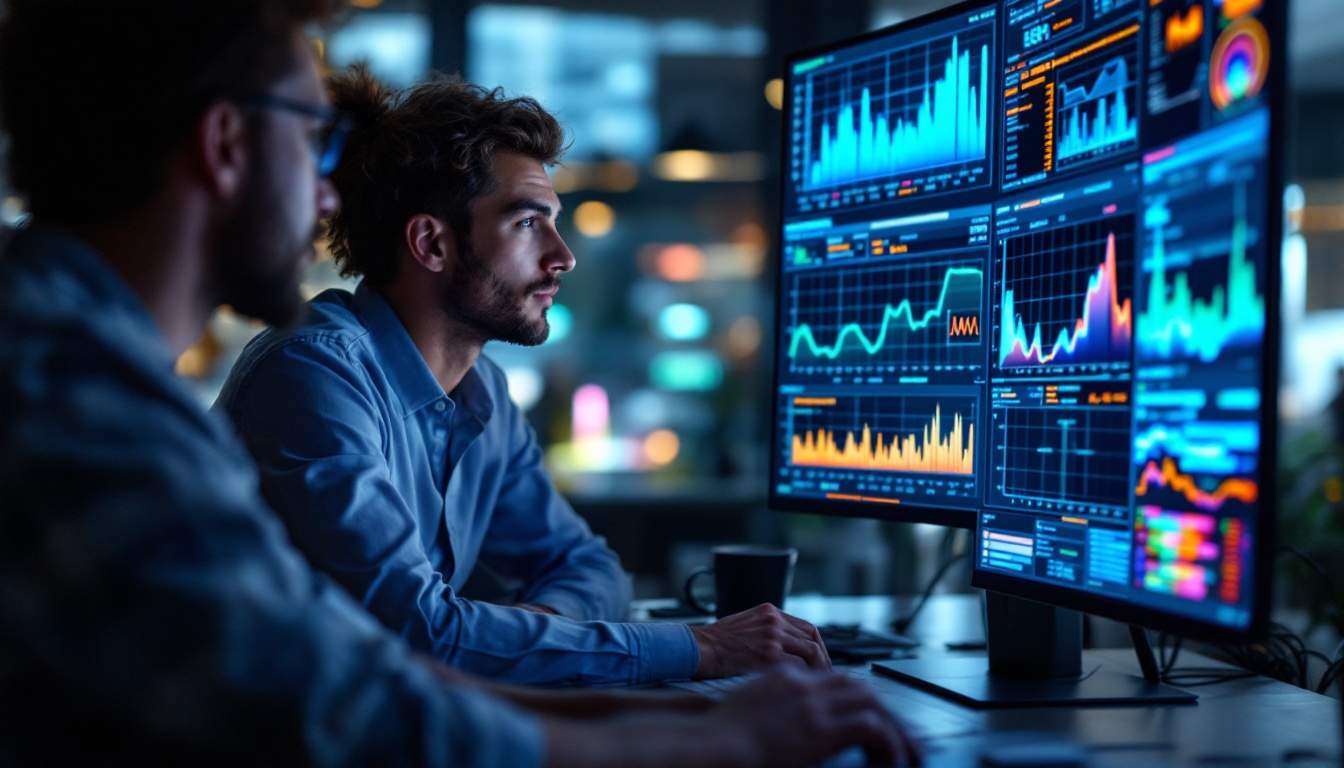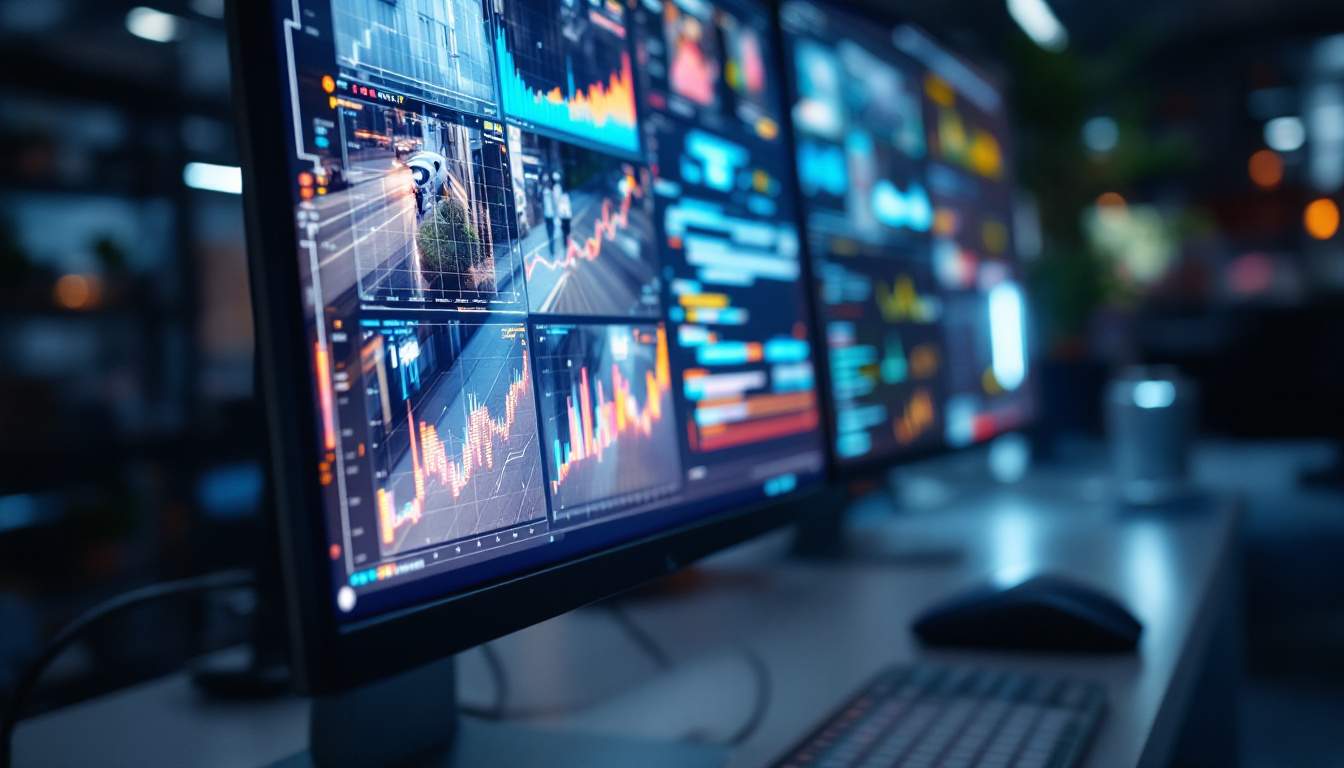Computer Vision: AI Video Analytics Explained
Computer Vision is a field of artificial intelligence (AI) that enables computers and systems to derive meaningful information from digital images, videos, and other visual inputs. It is a key technology behind AI Video Analytics, which involves the analysis of video data to detect and determine temporal events not based on a single image. As such, it plays a crucial role in a variety of applications, from surveillance and security to social media and entertainment.
AI Video Analytics, powered by computer vision, has the potential to transform numerous industries by providing them with the ability to analyze and interpret video data at a scale and accuracy beyond human capabilities. This glossary article aims to provide a comprehensive understanding of the key concepts and components of Computer Vision and AI Video Analytics.
Understanding Computer Vision
At its core, computer vision seeks to replicate the complexity of the human vision system, which is capable of identifying objects, recognizing patterns, and perceiving spatial dimensions. It involves the acquisition, processing, and interpretation of visual data to make sense of the world around us. The goal is to automate and enhance the human visual system using computers and software.

Computer vision technology uses algorithms and techniques to interpret and understand the visual world. These algorithms can be designed to perform a variety of tasks, such as object recognition, image restoration, and scene reconstruction, among others. The complexity of these tasks varies, ranging from simple color detection to the understanding of full 3D environments.
Components of Computer Vision
Computer vision comprises several key components, including image acquisition, image processing, and image analysis and understanding. Image acquisition is the process of capturing visual data, usually in the form of digital images or videos. This data is then processed to enhance its quality and prepare it for analysis.
Image analysis and understanding involve the extraction of meaningful information from the processed images. This could include identifying objects, recognizing patterns, or understanding the spatial layout of the scene. These tasks are typically performed using a variety of techniques, such as machine learning and deep learning algorithms.
Applications of Computer Vision
Computer vision has a wide range of applications across various industries. In the automotive industry, it is used in autonomous vehicles to detect and recognize objects, such as other vehicles, pedestrians, and traffic signs. In the retail industry, it can be used for inventory management, where it can automatically count items and recognize when stock is low.
In the healthcare sector, computer vision can assist in medical image analysis, helping doctors to detect diseases and conditions from medical scans. In the security and surveillance industry, it can be used to monitor video feeds for suspicious activity. These are just a few examples of how computer vision is being used to enhance and automate tasks across different sectors.
AI Video Analytics Explained
AI Video Analytics, also known as video content analysis, is the capability of automatically analyzing video to detect and determine temporal and spatial events. This technical capability is used in a wide range of domains including entertainment, health-care, retail, automotive, transport, home automation, flame and smoke detection, safety and security.

The algorithms can be implemented as software on general purpose machines, or as hardware in specialized video processing units. Many different functionalities can be implemented in video analytics. Some examples are video motion detection, object recognition, object detection, crowd detection and counting, facial recognition, color recognition and many more.
Techniques Used in AI Video Analytics
AI Video Analytics employs several techniques to analyze and interpret video data. These include motion detection, object recognition, and scene understanding. Motion detection involves identifying changes in the position of an object relative to its surroundings or the change in the surroundings relative to an object.
Object recognition is the process of identifying a specific object in a digital image or video. Scene understanding involves interpreting the context of a particular scene, such as identifying the activities taking place or understanding the interactions between different objects in the scene. These techniques often use machine learning and deep learning algorithms to perform these tasks.
Applications of AI Video Analytics
AI Video Analytics has a wide range of applications across various sectors. In the security and surveillance industry, it can be used to monitor video feeds for suspicious activity, such as unauthorized access or unusual behavior. In the retail industry, it can be used to track customer movements and behavior, helping retailers to optimize store layouts and improve customer service.
In the healthcare sector, it can be used to monitor patient behavior and detect unusual patterns that could indicate a health issue. In the entertainment industry, it can be used to analyze viewer behavior and preferences, helping to personalize content and improve viewer engagement. These are just a few examples of how AI Video Analytics is being used to enhance and automate tasks across different sectors.
The Intersection of Computer Vision and AI Video Analytics
Computer Vision and AI Video Analytics are closely intertwined, with the former providing the foundational technology for the latter. Computer vision provides the tools and techniques to capture, process, and analyze visual data, while AI Video Analytics applies these tools and techniques to analyze and interpret video data.
The intersection of these two fields is leading to the development of powerful systems capable of understanding and interpreting the visual world in ways that were previously only possible for humans. These systems are increasingly being used in a variety of applications, from autonomous vehicles and security systems to healthcare diagnostics and personalized advertising.
Challenges and Future Directions
Despite the significant advancements in both Computer Vision and AI Video Analytics, there are still many challenges to be overcome. These include issues related to the quality and diversity of visual data, the computational requirements of processing and analyzing large volumes of video data, and the need for robust and reliable algorithms capable of dealing with real-world variability and complexity.
Looking ahead, the future of these fields lies in the development of more advanced algorithms, the integration of other sensory data, and the application of these technologies in new and innovative ways. As these challenges are addressed, we can expect to see even more impressive capabilities and applications from the intersection of Computer Vision and AI Video Analytics.
Conclusion
Computer Vision and AI Video Analytics represent two of the most exciting and rapidly evolving fields in artificial intelligence today. By enabling computers to understand and interpret visual data, these technologies are transforming a wide range of industries and applications, from security and surveillance to healthcare and retail.

While there are still many challenges to be overcome, the potential of these technologies is immense. As we continue to advance our understanding and capabilities in these areas, we can look forward to a future where machines can see and understand the world just as well, if not better, than humans.


